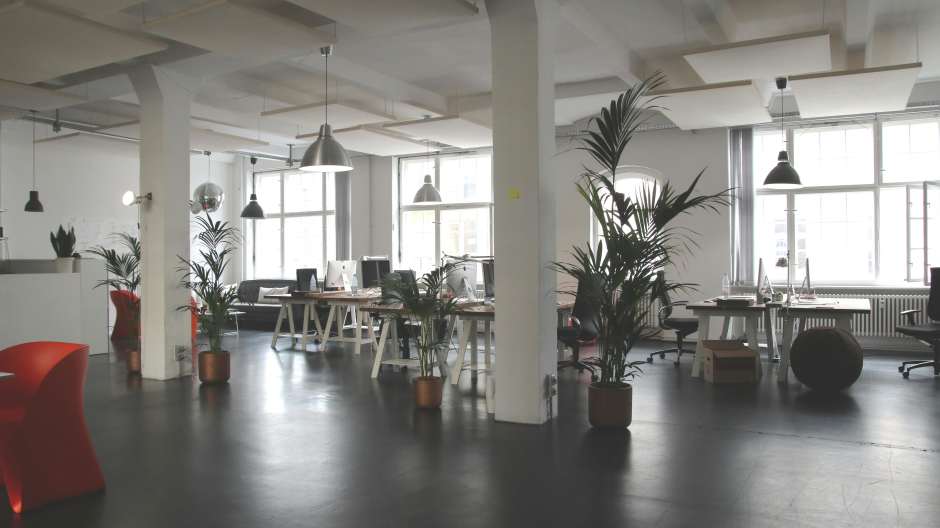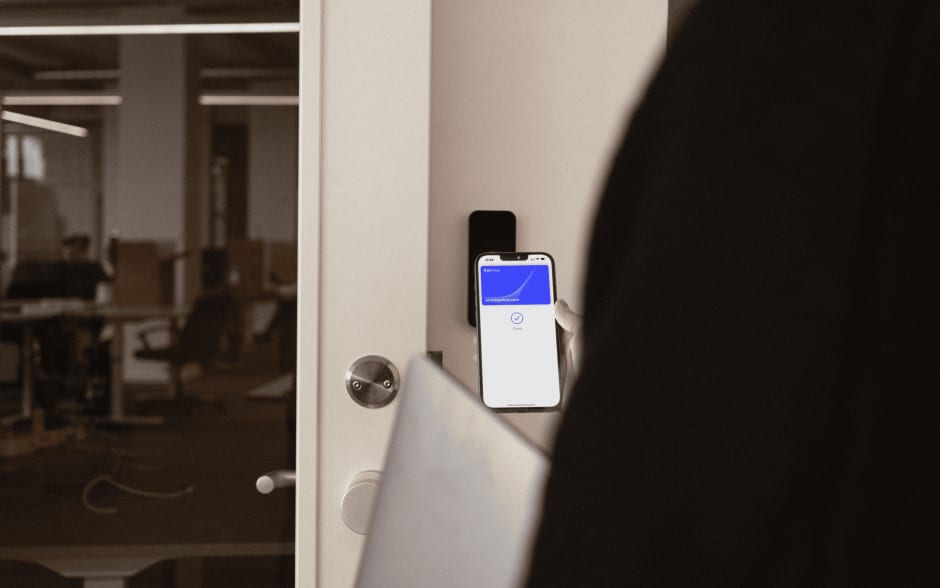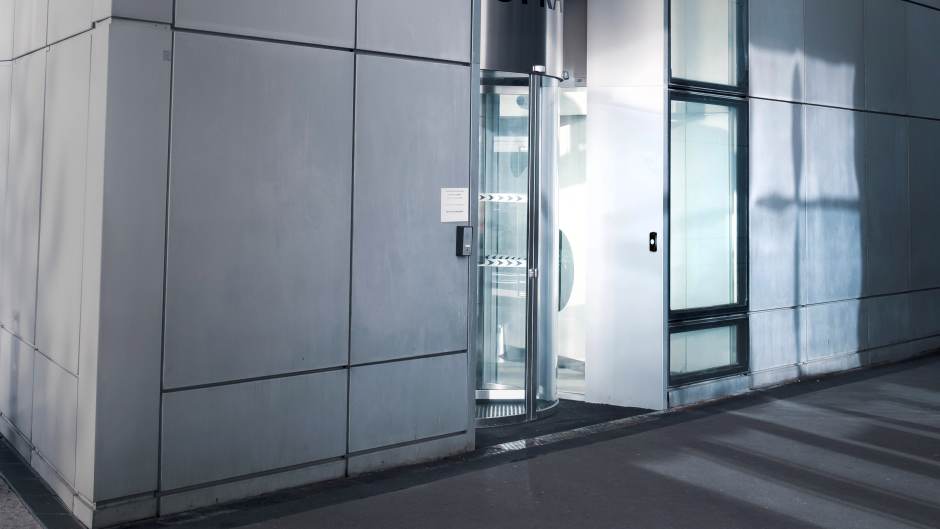Comparing a typical office of today with one from 10 or even 5 years ago makes it clear just how quickly things have changed. From enhanced access control systems to meeting rooms equipped with virtual reality (VR), advanced technology is reshaping workspaces around the world. That shift is likely to continue—or even accelerate—over the coming years.
The office of the future is tech-enabled, flexible, and more energy-efficient. It also offers new levels of security, safety, and engagement for employees and visitors alike. In this article, we’ll explain why these changes are happening and take you on a tour of what workplaces might look like moving forward. We’ll also explore what property owners and business leaders need to do to ensure they’re ready for the next era of workplaces.
Adapting to the modern office experience #
Office spaces often change in response to new concepts of collaboration and ideas about leadership styles. Many of the recent adjustments, however, are the result of a more profound transformation spurred by the COVID-19 pandemic. The generally contained, often rigid office experience of the past has been replaced in response to evolving employer and employee needs.
Employer priorities #
The traditional approach to building an effective workplace involved purchasing or leasing a space. COVID-19 turned that concept completely upside down.
With so many employees working from home or on hybrid schedules, it no longer makes sense for many businesses to maintain oversized office spaces. According to CBRE’s 2023-2024 Global Workplace and Occupancy Insights report, businesses are coping with the operational and financial consequences of low office utilization. Underutilized space can quickly drain a budget without offering any tangible benefits.

In response, many businesses are looking at their offices in a new way. The CBRE’s report says that 96% of organizations that measure space utilization are now looking at badge swipe or entry data, a 21% increase compared to 2021. Other popular methods of measurement include reservation systems and Wi-Fi or network usage.
This approach to occupancy planning is very different from the past, when businesses expected all their employees to be in the office every day. The goal now is to streamline operations and maximize the value of spaces.
Employee preferences #
Employee needs have also shifted since COVID-19 began. During the pandemic, many employees became more aware of the importance of work-life balance, flexibility, and safety. As a result, they’re now looking for comfortable, welcoming spaces where they feel secure and supported by their employers.
A recent study by Harvard Business Review confirms that employees view their workplaces differently now than prior to the pandemic:
- 60% of employees say the cost of going to the office now outweighs the benefits
- 67% feel going to the office requires more effort than it did before the pandemic
- 73% say it feels more expensive
- 48% of employees say return to office (RTO) mandates prioritize what leaders want over what employees need to do good work.
The evolving perception of what a workplace should be and what role it should serve in an employee’s life has had a dramatic impact on how employers structure their work environments. The office employee of the future will thus play a major part in determining what office spaces look like and how they function.
The latest employee and office trends #
Today’s workplace trends reflect how employers are trying to find a balance between their organizational goals and the preferences and needs of their employees. While some of these developments are primarily occurring in large cities, you can expect to see them become more widespread across industries and geographic locations over the next decade.
Hybrid work models #
The move toward hybrid and remote work was on the horizon before the pandemic hit, but safety requirements and stay-at-home orders put it on the fast track. Some people believed it would be a temporary change, but it quickly became obvious after the dust settled that this was a long-term—if not permanent—adjustment.
While many organizations have brought employees back to work face-to-face, office attendance has stabilized at 30% below pre-pandemic levels and remote work is three to four times more prevalent than in 2019.
Moving forward, employers can expect to see fewer employees in the office day in and day out. According to a recent Gallup survey, among employees with remote-capable jobs, 60% want hybrid work arrangements, a third prefer fully remote work, and less than 10% prefer to work on-site.
Four-day workweeks #
The perception that a five-day workweek is the only practical option has also begun to fade, in part due to concerns about space utilization but also in response to employee preferences. According to a 2023 Gartner survey, 63% of job candidates rated “four-day workweek for the same pay” as the top new and innovative benefit that would attract them to a job.
To stay competitive, a growing number of organizations are experimenting with different scheduling options. Shorter workweeks have been shown to have a variety of benefits for organizations, including:
- Improved recruitment and retention of talent
- Greater employee engagement
- Better employee well-being and lower stress
- Fewer employee absences and sick days
Recent research has shown that all this is possible without harming productivity and performance outcomes. A study conducted in 2022 found that participating organizations that implemented a four-day workweek saw a significant improvement in product quality and customer service, with 55% reporting an increase in work ability.
Hot desking #
Hot desking goes hand-in-hand with hybrid and four-day work schedules. In the past, most offices had cubicles and separate offices, with each employee working from a dedicated desk. Over time, some organizations began integrating areas for collaboration or moving to an open office floor plan.
The future of the office will likely still include those features, but for many companies, it will look dramatically different. Rather than assigned desks, employees will sign up to use certain spaces each day depending on whether and how long they’ll be in the office.
This strategy maximizes space efficiency and supports a more agile work environment. In an age when employees aren’t always on-site, hot desking allows for fluctuating in-office occupancy, keeping costs down while also offering a productive, comfortable space. This explains why, according to a 2023 survey, around a third of U.S. office workers reported their employers have implemented hot desking systems.
Cutting-edge technology #
Today’s office equipment goes far beyond printers and desktops. Workplaces are becoming increasingly tech-savvy, incorporating powerful software and devices that enhance the employee experience. Some of the technologies that you can expect to see in more offices over the next several years include:
- Internet of Things (IoT) devices and sensors that can assist with multiple aspects of an office, such as energy management and efficiency
- Resource booking platforms that enable and simplify hot desking and space management by allowing employees to reserve spaces or equipment before coming to the office
- Access control systems like Kisi, which allow businesses to boost the employee and guest experience by streamlining and automating access and setting schedules for holidays or hybrid workers, and enhance security by monitoring who enters and exits their properties.

Many offices will also leverage virtual reality (VR) and artificial intelligence (AI) to reinvent the workplace. VR, AI, 3D tools, and the metaverse are beneficial because they can create interactive environments and bring together employees across different locations.
For example, remote and in-office workers can meet and collaborate in real time by using VR and interactive environments. While these technologies aren’t currently available in every office, they become more mainstream every year and have a prominent part to play in the office of the future.
Enhanced amenities #
A paycheck, health insurance, and some vacation days are typical benefits that most people have come to expect from their employers. However, that list is expanding to include more unique amenities. With significant labor shortages at play, businesses have to take extra steps to secure the best talent. That means they can no longer assume that employees will carry certain costs of work without complaint.
Some companies have already begun offering creative amenities to their employers, such as:
- Housing subsidies
- Caregiver benefits
- Student loan repayment
- Financial and physical well-being programs
Businesses also have to consider whether their physical workspaces will entice employees to work onsite. A coffee maker and decent lighting are no longer enough. Employees want to work for companies that implement systems to promote their comfort and safety.
Essential solutions for the office of the future #
Businesses that are ready to embrace what’s next for their workplaces and employees might wonder what it will take to make that type of office a reality. Although organizations will need many different tools and technologies based on their size and structure, there are some essential solutions that offer a good place to start.
Access control #

Access control is an excellent example of an amenity that will soon become a must-have for prospective employees. With a system like Kisi, workers don’t have to worry about carrying their keys or digging out their ID badges. Instead, they can enter the office with their mobile devices or a simple hand wave.
The office of the future needs to bring the same level of convenience and effortlessness as working from home. That’s why employees should be able to enter the workplace and spaces they need as swiftly as possible.
Access control also improves security, protecting employees from intruders and deterring property damage. Deploying a system like Kisi can thus make an enormous difference to job candidates who want to feel that their employers value their safety and want to promote a healthy work environment.
IoT devices #
Some employees are already growing accustomed to the presence of IoT technology in their offices, but you can expect to see even more of it moving forward. In addition to using sensors for lighting, temperature, and security, businesses are exploring other innovative strategies, such as:
- Tracking the lifespan of office devices and alerting office managers when it’s time to replace them
- Enabling predictive maintenance so businesses can identify performance flaws in their systems early and prevent expensive repairs and downtime
- Supporting more accurate and detailed occupancy reporting with desk, chair, and equipment sensors
- Evaluating and improving floor plans based on data collected from motion sensors within the office
These are just a few of the possible applications of IoT devices. In the future, it’s possible that virtually everything in an office—from the furniture to the copiers—will include some type of IoT sensor.

Smart buildings #
When you put together employees’ changing needs and IoT technology, including access control, smart buildings begin to emerge. These spaces offer businesses greater control over many aspects of their spaces, including heating and cooling, security, and door locks. Buildings with these kinds of technology are quickly gaining ground. Researchers recently projected that the number of smart buildings will grow from 45 million in 2022 to 115 million in 2026.
The expanding use of smart buildings is no surprise when you consider how much time and money they can save by automating manual tasks. For example, an automated access control system like Kisi could eliminate the need for a 24-hour security team. It also allows employees to be more productive because they don’t have to spend time buzzing in guests, greeting delivery drivers, and unlocking doors for forgetful coworkers who left their keys at home.
In addition to access control, smart buildings can also monitor, analyze, and optimize performance for other systems. For instance, it can take temperature and humidity readings and automatically adjust the HVAC settings to create more comfortable work conditions.
Unlock the future with Kisi #
As with all things, the future of the office isn’t set in stone. World events, security concerns, and new technologies could result in changes that no one can foresee. What’s clear, however, is that office experiences won’t go back to what they were in the past. Businesses that can get on board with the vast opportunities that modern technologies like VR, IoT sensors, and access control offer will find themselves at a distinct advantage.
If you’re ready to future-proof your office and offer greater security, safety, and convenience to your employees, Kisi is ready to help. Kisi offers tailored access control solutions for global offices, hybrid workplaces, industrial buildings, and more. Book a demo to see Kisi in action and take a step into the future of the workplace.






